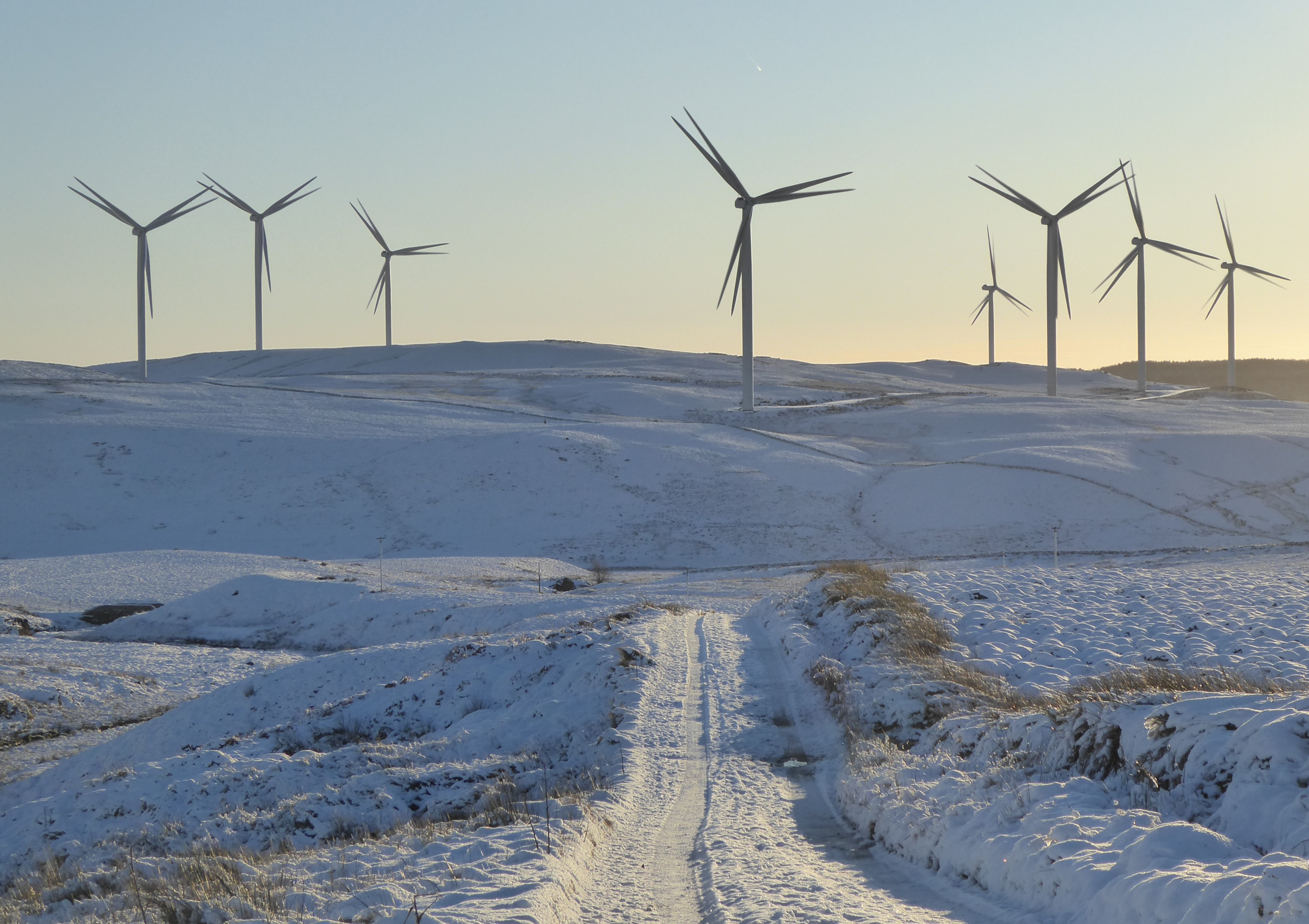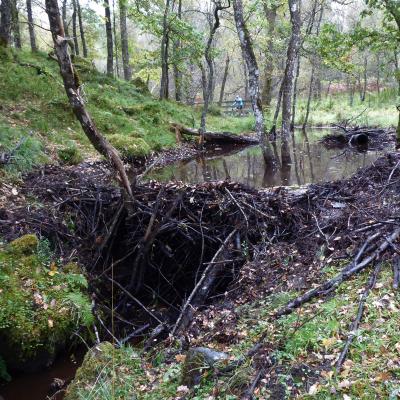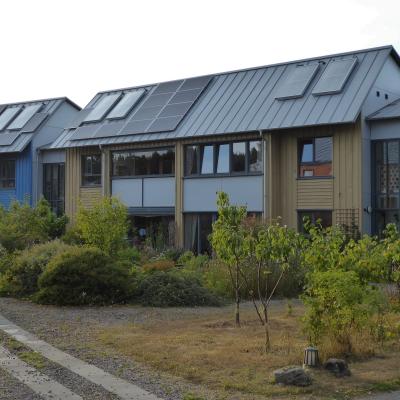To date I have neglected the exciting role of renewable electricity generation in Scotland. There is a lot of good news to share.
In 2022 Scotland, with its population of five million, generated more renewable electricity during the year than it used. In addition, there is still one operational nuclear power station and limited generation from gas. The last coal power station closed in 2016.
Scotland therefore generates more electricity than it uses (22TWh) so when the wind is blowing Scotland ‘exports’ to England, and on occasions when the wind isn’t blowing ‘imports’ gas fired electricity from England. After all we are one UK wide electricity grid.
This is a remarkable turnaround. In 2000 only 12% of our electricity was from renewables. So, what changed?
Sources of Renewable Electricity
Hydro-electric
Hydro-electric schemes were built across the Highlands of Scotland in the 1950’s. New dams were built to raise the water level in existing lochs or to create new reservoirs. These schemes are large, but not large enough to satisfy a booming economy demanding ever more electricity. Two pumped hydro schemes were also built to work in tandem with nuclear power stations. At night, when demand is low, the surplus power is used to pump water up to an upland reservoir. The pumps are reversed to enable generation during times of peak electricity demand, eg during adverts for Coronation Street! Their combined capacity is 17Gwh, which may sound large, but could only meet Scotland’s electricity demand for around 6 hours.
After a 40-year hiatus, there are now several new pumped storage schemes in the planning stage, for example Coire Glas, above the Great Glen. With an ever-increasing variability in electricity supply there is a renewed interest in the economic and environmental case for new pump storage schemes. Investors are currently waiting for the new Long Duration Electricity Storage investment support scheme to come into effect before committing to construction.
Onshore Wind
The first large scale commercial windfarm was built at Hagshaw in 1995. 26 turbines had a total capacity of 16MW. But technology keeps on improving. These 26 turbines are in the process of being replaced by 14 larger, more powerful 6MW turbines with a total capacity of 80MW . That is a 900% increase in power output per turbine.
Onshore wind is the main source of electricity in Scotland, with 9.5GW out of a total renewables capacity of 15GW. There are over 4,000 large wind turbines. Most of these windfarms were granted planning permission for 25 years, so there is the potential to gradually repower these existing sites, and perhaps double the generation capacity from the same area of land.
Whitelee, not far from Glasgow, is the UK’s largest windfarm comprising 215 turbines with a total capacity of 539MW. There are plans to enhance the site with battery storage to balance the local grid; and a 20MW solar farm to power an electrolyser to create hydrogen for heavy vehicles. If you are interested, there is a visitor centre, coffee shop and exhibition to visit.
Offshore Wind
There are just under 500 offshore wind turbines in the seas around Scotland with a capacity of 4.3GW. There is a target to increase this capacity to 11GW by 2030, with a potential for 45GW if all sites under consideration are built.
Whilst a typical onshore wind turbine has blades 50 metres long generating 3MW, offshore there are fewer planning restrictions. There are working offshore wind turbines with 115m long blades, with a capacity of 15MW.
Most of the existing turbines are fixed to the relatively shallow seabed up to 50 metres deep, but this restriction is being eliminated by successful trials of floating offshore wind turbines. They can be sited in deeper waters, restricted only by the length of anchor chains to moor them to the seabed. The Hywind project off Peterhead was the first pilot offshore wind farm in the world.
Marine Energy
The Orkney Islands host the European Marine Energy Centre, a world leading test and demonstration centre for wave and tidal technologies.
The 400 MW MeyGen project being built in phases in the Pentland Firth is the largest tidal stream project in the world. The energy generated by tidal stream is highly predictable, but still more expensive than windfarms.
Despite early attempts to generate electricity from wave power, the engineering challenges to build reliable devices in remote and stormy seas have so far proved insurmountable at reasonable cost.
Solar
Solar energy at Northern latitudes is highly variable. It can be extremely effective in the summer months, but rather marginal during the winter. 420 MW has been installed in Scotland on domestic and commercial roofs, and at solar farms mainly sited towards the sunnier east of the country. There are significant plans for future expansion, particularly as solar power can complement wind generated energy.
Policy Issues
Constraint payments
If there is too much electricity being generated in a locality, for example on a windy day with low power demand, then electricity generators can be paid a ‘constraint payment’ to stop generation. This is a valid market mechanism to balance variable supply and demand but has become a bit out of control as windfarms have been built faster than the long-distance transmission pylons that are necessary to get the power to customers. This is well recognised, and plans are in place to build new transmission lines to England. New pumped hydro storage schemes could also soak up this ‘excess’ electricity.
Why did renewables surge?
UK Government policy combined with supportive Scottish Government planning rules led to the surge in renewable generation in Scotland. The Carbon Price Floor levied a tax on carbon emission from power generation alongside the Contracts for Difference which is an auction scheme to promote the construction of new electricity generation assets. Once the carbon price floor came into effect, building onshore wind turbines became the cheapest form of new generation. Contracts for Difference provide an incentive by offering the investor a guaranteed price (subsidy) for selling electricity. If the electricity price rises above the agreed bid price, then the windfarm operator actually pays money back to the Government which helps to stabilise and reduce our bills.
The Future?
Even allowing for the expected increase in electricity demand from electric cars and heat pumps, Scotland has the potential to generate far more renewable electricity than can be used or exported through existing transmission lines. Another option is to use renewable electricity to power data centres, or to produce hydrogen, perhaps to export to industrial users in Germany or convert it for fuel for shipping.
Scotland has shown how a region can rapidly decarbonise its electricity power grid. This revolution was led by wind power. In many other regions it will be solar that leads the way. All you need is supportive government policies and adaptable power companies. This can be achieved at an affordable price, with the bonus of ending our need to import fossil fuels from potentially unstable regions of the world.
Statistics
Scot Gov website: https://www.gov.scot/publications/energy-statistics-for-scotland-q3-2024/pages/total-final-energy-consumption/
Offshore wind: https://www.offshorewindscotland.org.uk/the-offshore-wind-market-in-scotland/
--------------------------------------------------------------------------------------------------------------------------
Carbon Choices
To get first sight of my new blogs, email me at This email address is being protected from spambots. You need JavaScript enabled to view it. with the header “please subscribe”.
You might also enjoy my book, Carbon Choices, on the common-sense solutions to our climate and nature crises. Available from Amazon or a signed copy direct from me. I am donating one third of profits to rewilding projects.
Please follow me on social media:
LinkedIn, X, Facebook, Instagram and now on Bluesky
Please feel free to share any of my blogs.









